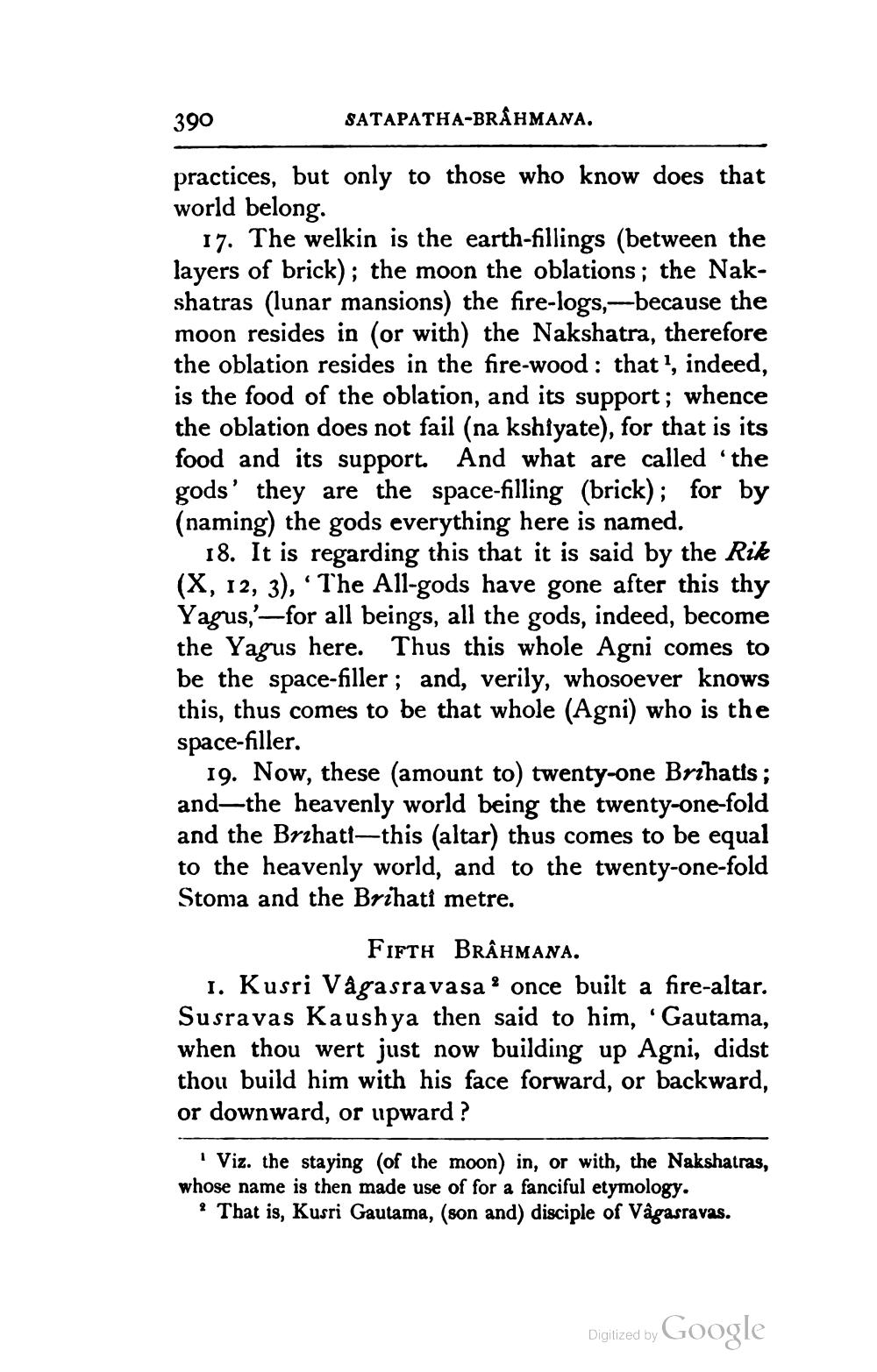________________
390
SATAPATHA-BRÅHMANA.
practices, but only to those who know does that world belong.
17. The welkin is the earth-fillings (between the layers of brick); the moon the oblations; the Nakshatras (lunar mansions) the fire-logs ---because the moon resides in (or with) the Nakshatra, therefore the oblation resides in the fire-wood : that ', indeed, is the food of the oblation, and its support; whence the oblation does not fail (na kshiyate), for that is its food and its support. And what are called 'the gods' they are the space-filling (brick); for by (naming) the gods everything here is named.
18. It is regarding this that it is said by the Rik (X, 12, 3), “The All-gods have gone after this thy Yagus,'—for all beings, all the gods, indeed, become the Yagus here. Thus this whole Agni comes to be the space-filler; and, verily, whosoever knows this, thus comes to be that whole (Agni) who is the space-filler.
19. Now, these (amount to) twenty-one Brihatis; and—the heavenly world being the twenty-one-fold and the Brihatt—this (altar) thus comes to be equal to the heavenly world, and to the twenty-one-fold Stoma and the Brihati metre.
FIFTH BRAHMANA. 1. Kusri Vågasravasa? once built a fire-altar. Susravas Kaushya then said to him, 'Gautama, when thou wert just now building up Agni, didst thou build him with his face forward, or backward, or downward, or upward ?
I Viz. the staying (of the moon) in, or with, the Nakshatras, whose name is then made use of for a fanciful etymology.
? That is, Kusri Gautama, (son and) disciple of Vâgasravas.
Digitized by Google




